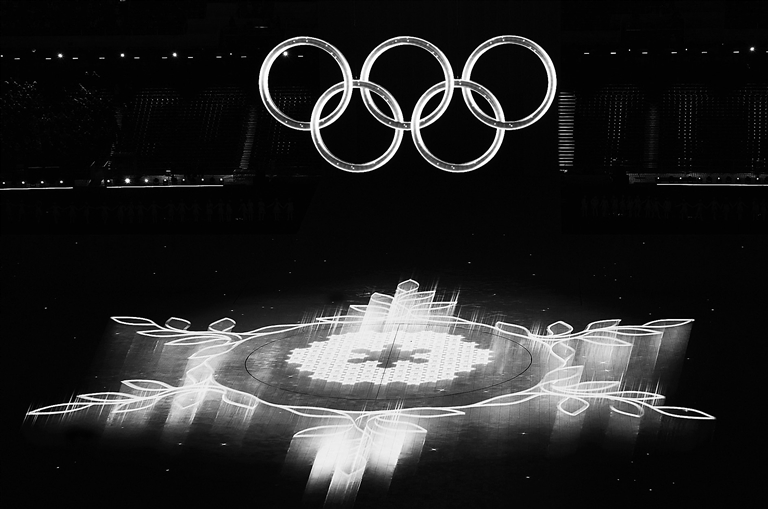
FROM the breathtaking display of rising Olympic rings and a colossal ice cube, to the unique ignition of a “snowflake” Olympic flame, Beijing, the first dual Olympic city in the world, is innovating green and high-tech standards for the Winter Games with its strong space power at the opening ceremony Friday. Global Times quoted insiders as saying that behind the grand visual feast of Friday’s ceremony was China’s space standard and major space project management mode throughout the preparation process. High-tech elements such as 5G, Internet of Things and AI technology accounted for 60 percent of the performance’s innovation. At the opening ceremoy, the ground of the National Stadium, also known as the Bird’s Nest, was equipped with a huge LED screen developed by BOE. The size of the screen reaches 10,552 square meters, which according to its constructor China Academy of Launch Vehicle (CALT), makes it the world’s largest one of its kind to date, comprising more than 40,000 LED modules. The CALT, China’s largest developer and producer of carrier rockets, said that the supersized LED screen would provide the world a visual feast. Space control technology helps the precise display of the ice cube. According to CALT, the lifting platform weighing some 400 tons can elevate a payload of 180 tons, and it can strictly control the position of the ice cube within ±1 millimeter when it rises 10 meters from the ground. To coordinate thousands of performers at the ceremony and personnel in numerous positions, CALT applied space technology integrated with Internet of Things, digital drill, as well as 5G communications, to the building of an intelligent commander center for the opening ceremony. As the centerpiece of the 100-minute-long ceremony, Beijing lifted the Olympic rings from the ice cube in some 40 seconds. The rings have a special aluminum alloy truss structure, and a coating of LED display screens as well as diffusion plates, making them as light and strong as China’s rockets, CALT developers said. Weighing around 3 tons with a thickness of only 350 millimeters, the almost paper-thin rings could sustain a strong gale of Scale 6. And just like the Long March-2F manned carrier rocket that always has a standby backup, LED on the rings also has set up redundancy and could be replaced with abnormal parts without delay, they said. Intel has also helped to realize key innovations in the opening program. Intel disclosed that based on 3DAT technology on a strong scalable processor, Intel customized the “real-time performance special effects system based on AI technology.” Behind the impressive images of the wind flowing through the sky dissipating at the feet of performers in real time, and the laughter of more than 500 children on the stage, the video signals were then sent to the margin computing system to reconstruct and render 3D signals and present the artistic image generated on the LED screen. In terms of coverage, Intel, relying on advanced AI algorithms, designed and developed several human-testing AI models to stabilize hundreds of actors in the precision recognition field, eventually using multiple cameras to mark their locations in real time, and only four cameras were used to cover the entire site to complete the gathering of information. In terms of transmission efficiency, the real-time special effects system was developed through the Intel OpenVINO visual tool package, combining the Intel DL Boost machine-learning acceleration technology to achieve fluid and real-time video data reading and processing.(SD-Agencies) | 
